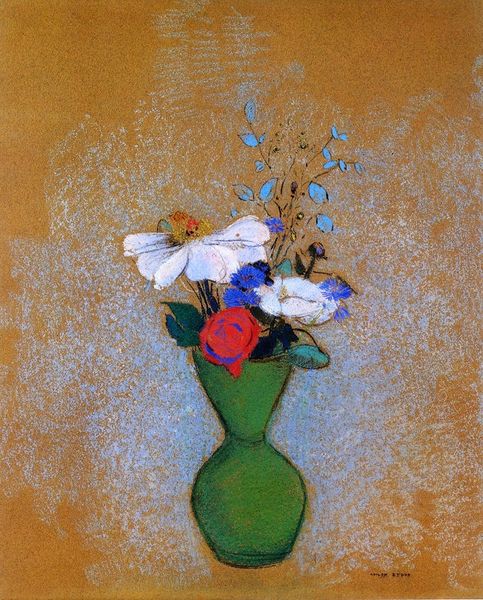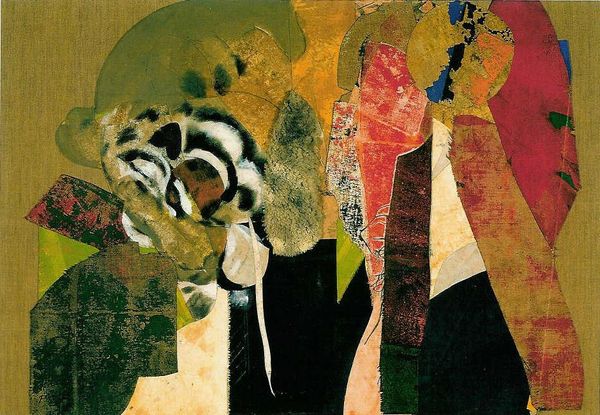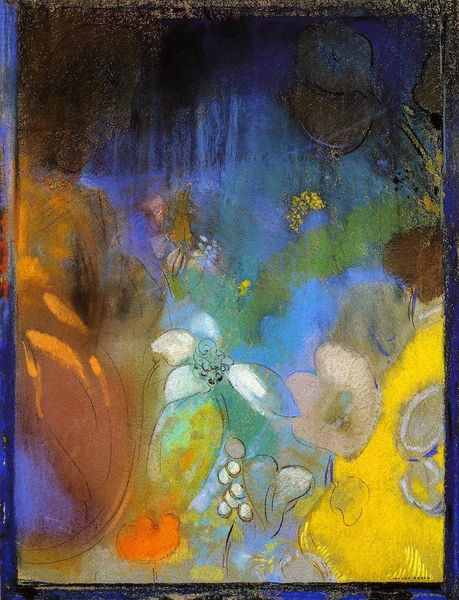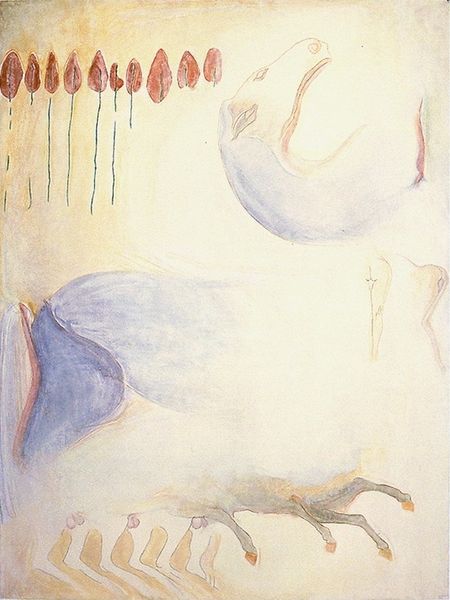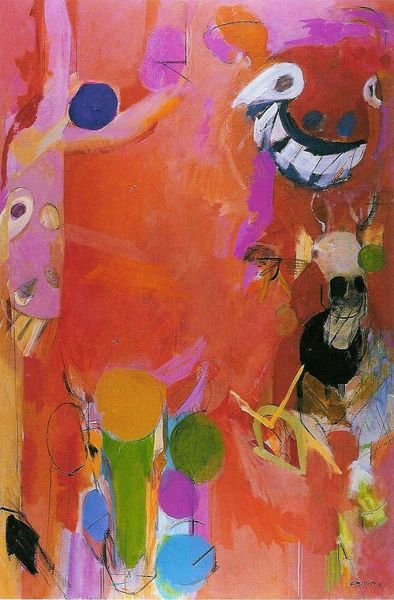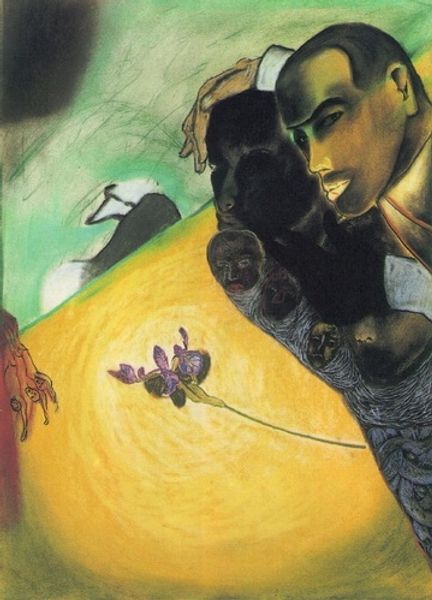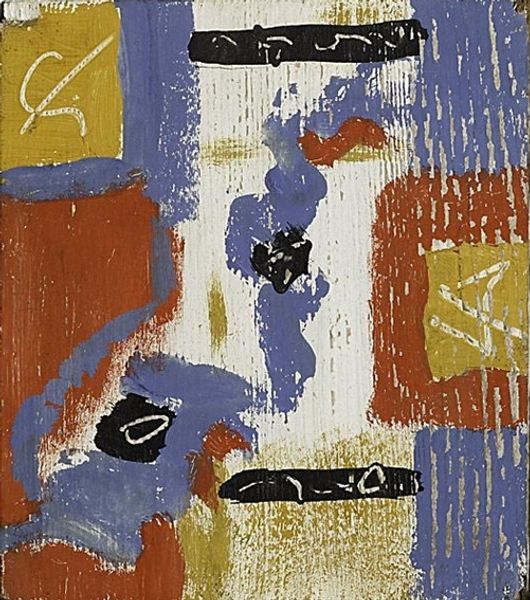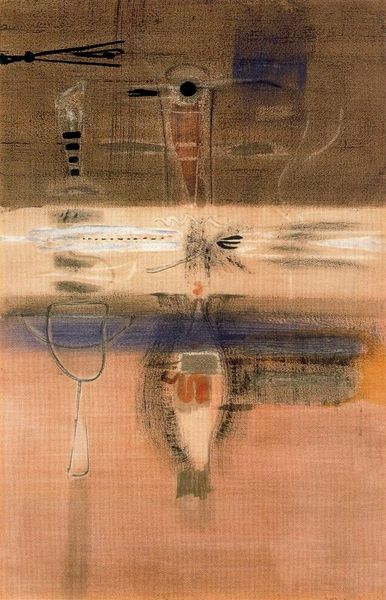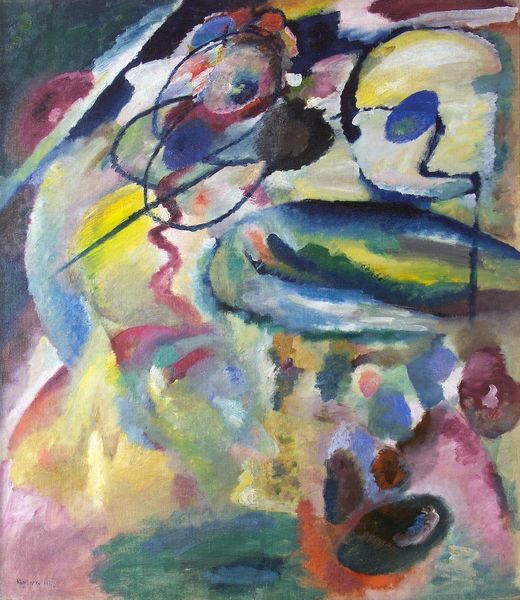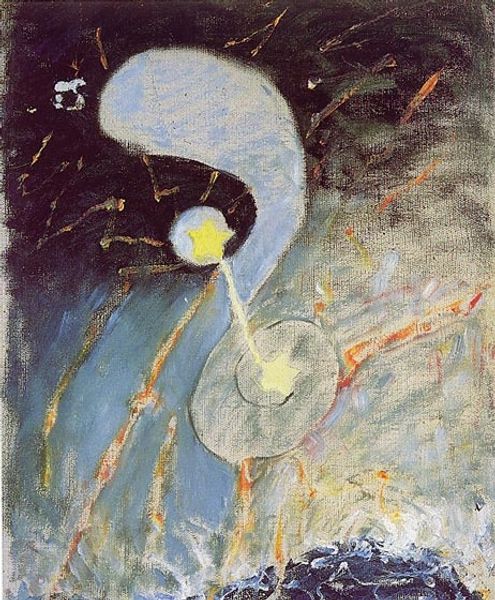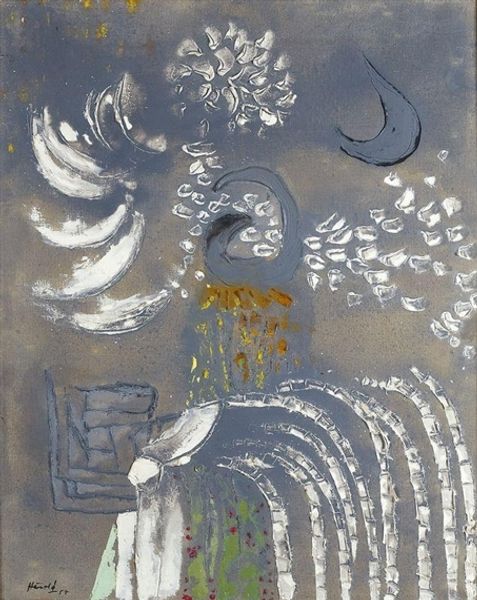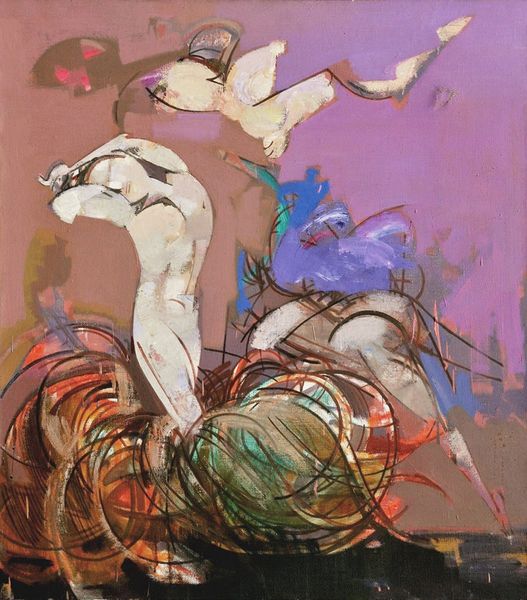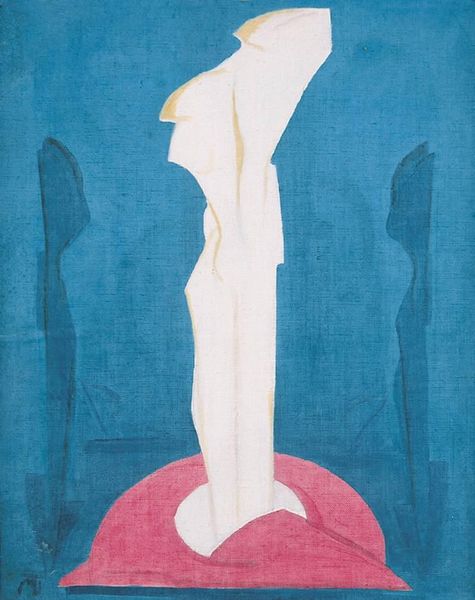
Copyright: Francis Bacon,Fair Use
Editor: Francis Bacon's "Figure in Movement," painted in 1978 using oil paint, immediately strikes me as deeply unsettling. The contorted figure against that stark orange and black... it’s visceral. What historical currents might have influenced this unsettling aesthetic? Curator: Well, considering Bacon's work through a historical lens, one can't ignore the shadow of the World Wars and the Cold War. There’s a pervasive sense of anxiety and existential dread that permeates much of the art produced in that period. Do you see that sense of vulnerability in the figure, how it seems trapped or exposed? Editor: Absolutely. The figure's isolation against the flattened background definitely amplifies that feeling of entrapment. The vibrant color palette only seems to exacerbate it further. Was this also perhaps a comment on societal norms of representation? Curator: Exactly! Think about how Bacon intentionally distorted the human form. In the context of postwar society, which often prioritized conformity, such distortions can be seen as a form of rebellion against those rigid social and artistic conventions. His works challenge the idealized images propagated by popular culture, offering a raw, unvarnished view of humanity. Editor: So, Bacon's “Figure in Movement” wasn’t just a personal expression of anxiety, but a reflection on the broader socio-political landscape? Curator: Precisely. He used the human figure to express a kind of universal suffering and alienation, reflecting a society grappling with immense trauma and change. The gallery system embraced that for its cultural relevance at the time. What I wonder is, does viewing his work in our time diminish or amplify its original intent? Editor: That's a fascinating question! I think the passage of time perhaps provides another layer of understanding – allowing us to appreciate its formal qualities while recognizing its lasting cultural significance. Curator: I agree, considering art in this light enriches our understanding. It serves as a lens to better see both present and past realities.
Comments
No comments
Be the first to comment and join the conversation on the ultimate creative platform.
